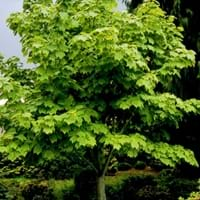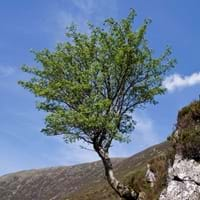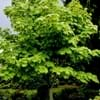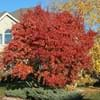Life Span
Perennial
Perennial
Origin
Northeastern United States, Mid-Atlantic United States, Southeastern United States, Canada
Asia, Europe, Northern Africa
Types
-
Sorbus aucuparia fenenkiana, Sorbus aucuparia glabrata, Sorbus aucuparia praemorsa
Habitat
moist forests, Slopes
Temperate Regions
USDA Hardiness Zone
3-7
3-7
Sunset Zone
-
A1, A2, A3, 1a, 1b, 2a, 2b, 3a, 3b, 4, 5, 6, 7, 8, 9, 10, 14, 15, 16, 17
Habit
Upright/Erect
Oval or Rounded
Flower Color
Yellow, Yellow green
White
Flower Color Modifier
Bicolor
Bicolor
Fruit Color
Green, Brown
Orange, Yellow
Leaf Color in Spring
Light Green
Green
Leaf Color in Summer
Green
Green
Leaf Color in Fall
Yellow
Dark Green
Leaf Color in Winter
-
Dark Green
Leaf Shape
Maple shaped
Pinnate
Plant Season
-
Spring, Fall
Sunlight
Partial Sun, Partial shade
Full Sun, Partial Sun
Type of Soil
Loam
Clay, Loam, Sand
The pH of Soil
Acidic, Neutral
Acidic, Neutral
Soil Drainage
Well drained
Average
Bloom Time
Early Spring, Spring
Late Spring
Where to Plant?
Ground
Ground
How to Plant?
Layering, Seedlings, Stem Cutting
Budding, Grafting, Stem Cutting
Plant Maintenance
Medium
Medium
Watering Requirements
Requires regular watering
Do Not over Water, Water in the early morning hours
In Summer
Lots of watering
Lots of watering
In Spring
Moderate
Moderate
In Winter
Average Water
Average Water
Soil pH
Acidic, Neutral
Acidic, Neutral
Soil Type
Loam
Clay, Loam, Sand
Soil Drainage Capacity
Well drained
Average
Sun Exposure
Partial Sun, Partial shade
Full Sun, Partial Sun
Pruning
Prune if you want to improve plant shape
Remove dead or diseased plant parts, Trim each shoot back to the first set of leaves
Fertilizers
All-Purpose Liquid Fertilizer
All-Purpose Liquid Fertilizer, Doesn't require fertilization when grown in rich soil
Pests and Diseases
Anthracnose, Bacterial leaf scorch, Bleeding canker, Decline, Fomes root rot, Ganoderma root rot, Laetiporus root rot, Leaf spot, Powdery mildew, Red blotch, Tar spot, Verticillium Wilt
Aphids, blister mites, Canker, fireblight, sawflies, Silver leaf
Plant Tolerance
Drought
-
Flowers
Insignificant
Yes
Flower Petal Number
Single
Single
Foliage Texture
Coarse
Fine
Foliage Sheen
Matte
Matte
Allergy
Asthma, Runny nose, Skin irritation
Anxiety, Depression, High blood cholestrol, High blood pressure, Pain, Stress
Aesthetic Uses
Showy Purposes
along a porch, deck or patio, Showy Purposes
Environmental Uses
Air purification
Air purification, Food for birds, Shadow Tree
Medicinal Uses
Antirheumatic, Cold, Cough, Emetic, gonorrhoea, Kidney problems, Pectoral, Swelling, Vomiting
Diarrhea, Inflammation, Laxative, Urinary tract problems, Vitamin C
Part of Plant Used
Leaves, Sap
Bark, Fruits, Wood
Other Uses
Used as Ornamental plant, Used as preservative
Used for its medicinal properties, Used for woodware
Used As Indoor Plant
No
No
Used As Outdoor Plant
Yes
Yes
Garden Design
Feature Plant
Feature Plant, Mixed Border, Topiary / Bonsai / Espalier
Botanical Name
ACER pensylvanicum
Sorbus aucuparia
Common Name
Moosewood, striped maple, moose maple
Rowan, Mountain ash
In Hindi
धारीदार मेपल
रोवाण पौधा
In German
gestreifte Ahorn
Rowan Tree
In French
érable rayé
Rowan Tree
In Spanish
arce rayado
Rowan Tree
In Greek
ριγέ σφενδάμου
Rowan Tree
In Portuguese
plátano listrada
Árvore de Rowan
In Polish
paski klonu
Rowan Tree
In Latin
alba acernis
Rowan ligno
Phylum
Magnoliophyta
Magnoliophyta
Class
Magnoliopsida
Magnoliopsida
Family
Aceraceae
Rosaceae
Clade
Angiosperms, Eudicots, Rosids
Angiosperms, Eudicots, Rosids
Importance of Moosewood Tree and Rowan Tree
Want to have the most appropriate plant for your garden? You might want to know the importance of Moosewood Tree and Rowan Tree. Basically, these two plants vary in many aspects. Compare Moosewood Tree and Rowan Tree as they differ in many characteristics such as their life, care, benefits, facts, etc. Every gardener must at least have the slightest clue about the plants he wants to plant in his garden. Compare their benefits, which differ in many ways like facts and uses. The medicinal use of Moosewood Tree is Antirheumatic, Cold, Cough, Emetic, gonorrhoea, Kidney problems, Pectoral, Swelling and Vomiting whereas of Rowan Tree is Diarrhea, Inflammation, Laxative, Urinary tract problems and Vitamin C. Moosewood Tree has beauty benefits as follows: while Rowan Tree has beauty benefits as follows: .
Compare Facts of Moosewood Tree vs Rowan Tree
How to choose the best garden plant for your garden depending upon its facts? Here garden plant comparison will help you to solve this query. Compare the facts of Moosewood Tree vs Rowan Tree and know which one to choose. As garden plants have benefits and other uses, allergy is also a major drawback of plants for some people. Allergic reactions of Moosewood Tree are Asthma, Runny nose and Skin irritation whereas of Rowan Tree have Anxiety, Depression, High blood cholestrol, High blood pressure, Pain and Stress respectively. Having a fruit bearing plant in your garden can be a plus point of your garden. Moosewood Tree has no showy fruits and Rowan Tree has showy fruits. Also Moosewood Tree is not flowering and Rowan Tree is flowering. You can compare Moosewood Tree and Rowan Tree facts and facts of other plants too.





